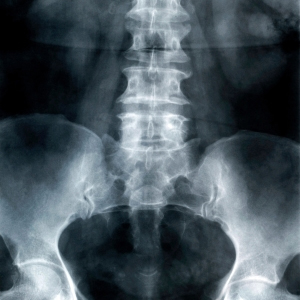 Has your doctor recommended that you have spine surgery? If “yes,” your doctor might have talked to you about the different “implants” or “instrument systems” that he or she will use during your surgery. If you’re like most patients, this whole subject gets very confusing!
Has your doctor recommended that you have spine surgery? If “yes,” your doctor might have talked to you about the different “implants” or “instrument systems” that he or she will use during your surgery. If you’re like most patients, this whole subject gets very confusing!
What your surgeon is describing when he or she talks about “spinal implants or instruments” is special equipment that will be used to help surgically correct your spinal problem. The very good news is that in the last 10 years, there have been incredible advances in this field. Implants are available today that help surgeons achieve surgery results that were not thought possible even 10 years ago.
The articles below will you navigate through this complex field. Some of the articles provide an overview of the entire subject. Others go into more detail about specific implants. We’re sure you’ll find them to be an invaluable tool as you seek to learn more about your surgery.
- Minimally Invasive Spine Surgery Information Center
Everything you need to know about minimally invasive spine surgery (MISS) including articles on specific procedures, MISS for scoliosis, fractures, tumors, as well as video presentations and updates on the latest MISS technology. - Image-Guided Surgery: Space Age Technology Enters the Operating Room
Image-guided surgery enables spine surgeons to see and navigate through the patient’s anatomy three-dimensionally (3D) in real time before and during surgery.
Non-Surgical Technology
- Interventional Pain Medicine: Options for Chronic Pain
If your primary care physician cannot pinpoint the source of your pain, it may be best to seek the care of a pain specialist such as an interventional pain medicine physician. - Drug Preparations Applied to the Skin Help Relieve Pain
Topical preparations are medications that can help reduce or alleviate pain caused by osteoarthritis, rheumatoid arthritis, and soft tissue trauma.
Surgical Technology
- Artificial Disc Replacement: Randomized Clinical Trial Update
The potential benefits of artificial discs allows earlier participation in post-operative rehabilitation and activities and reduces stress to adjacent joints. - Artificial Discs: Spine Experts Speak Out
Are artificial cervical discs the cure for neck pain? Or are they one more high-tech treatment that’s no more effective than traditional surgery? Read what leading spine experts think about this new alternative to spinal fusion and instrumentation. - DISC Nucleoplasty Percutaneous Discectomy
Patients who can benefit from percutaneous disc decompression or ‘percutaneous discectomy’ as it is called, are those with pain arising from a contained herniated disc – that is a bulging disc where there is no rupture in the outer wall. - Balloon Kyphoplasty Step by Step
Balloon kyphoplasty is a minimally invasive treatment in which orthopaedic balloons are used to gently elevate the bone fragements in an attempt to return them to a correct position. - Lumbar Discectomy: Minimally Invasive Spine Surgery
Micro Endoscopic Discectomy (MED) is a newer minimally invasive procedure used to remove a herniated disc. - Minimally Invasive Spine Surgery: The Benefits
Minimally invasive techniques are changing the face of spine surgery. What used to result in a week-long hospital stay, a year’s recovery period and a large scar has been diminished to a few days, a few months and a few small scars. - Percutaneous Neuromodulation Therapy (PNT)
Percutaneous neuromodulation therapy (PNT) is a non-invasive, low-risk procedure that can help treat pain. - Spinal Cord Stimulation: Is it Right for You?
For some patients, spinal cord stimulation is an option to treat chronic low back pain. In this therapy, electrical impulses are used to block pain from being perceived in the brain. Instead of pain, the patient feels a mild tingling sensation. - Spinal Pumps and Stimulators
Although far from panaceas, pumps and stimulators have proven to be very effective with carefully selected patients whose severe pain persists despite prior treatment efforts. - Treatment of Intractable Pain Has Come a Long Way
Microvascular decompression, radiofrequency rhizotomy, and spinal cord stimulation are procedures that may help control pain when medications prove ineffective.
Source: www.spineuniverse.com







